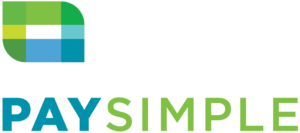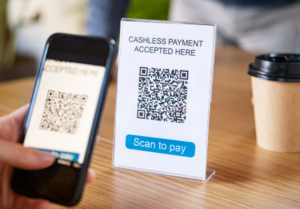By David Sharp, President, PaySimple, June 1, 2021

Last year was pivotal in the payments industry when the COVID-19 pandemic forced many businesses to rethink their business strategies and adopt new revenue streams. Despite its many downsides, the pandemic has proven the necessity for small companies to re-align their payment processes.
Of the many options small businesses have to improve their business performance, adopting a digital payment solution ranks among the top in value for them and their customers. From automated invoicing and payment collections to managing risk and providing a safe, secure customer experience, digital payment solutions add value in the post-COVID environment and beyond.
Let’s take a look at some of the top digital payment trends that are driving the future of payments.
Increased convenience and safety with contactless payments
Worldwide consumer demand for contactless payments has skyrocketed, and research indicates that nearly one in three US consumers select contactless payments as their preferred payment method. The dramatic increase in contactless payments throughout the US economy presents an opportunity for service providers and other businesses to not only meet customer demand but to take advantage of the many benefits of adopting digital payment solutions, including providing a safe, secure payment experience for their customers.
Mobile devices become digital wallets

Dipping a chip card, swiping a credit card, or keying in a credit card number on a mobile device is becoming the norm for many customers and businesses. With smartphones in the hands of most consumers, the opportunity to increase revenue through mobile payments can’t be ignored.
The ability to sell and buy services and products online, access cash flow reporting, manage customers’ accounts and send invoices from anywhere are some of the key reasons why businesses are increasingly adopting mobile payment applications.
New transaction channels improve cash flow
Coming out of the COVID crisis, many service-based businesses will open more transaction channels, including e-commerce and subscription billing to help augment and monetize their businesses and provide more opportunities in the future. Things such as recurring billing and contactless transactions at the point of sale allow companies to conduct business safely and focus on their core business rather than worrying about managing their cash flow. Providing the ability to accept one-time or recurring purchases offers more flexibility to customers. Companies that provide recurring services or subscription models can benefit from automated, consistent cash flow.
Integrated solutions streamline financial transactions

Many businesses are integrating payment solutions that allow them to natively handle cash flow within their software-as-a-service (SaaS) products and mobile applications. Automating payments will enable companies to focus on delivering service instead of conducting financial transactions. Many businesses recognize this operational advantage, and as a result, there is an uptick in demand. Integrated payments, SaaS, and mobile application providers are building solutions that give businesses the flexibility to accept payments how they like with one-time payments, recurring payment schedules, or payment plans.
Customer service and trust are king
The number one reason consumers choose not to complete purchases online is trust. Knowing this, it is increasingly important to provide customers with a convenient and secure payment experience so they return in the future.

Providing a seamless, secure, and quick payment experience can be achieved with the right solution, and enhancing the payment transaction process is a key part of delivering great customer service. Companies are taking this one step further by integrating customer relationship management (CRM) solutions to allow businesses to manage their customer base directly through their payment system for streamlined operations.
Before the pandemic, traditional methods of manual invoicing and collecting checks may have sufficed. However, customers increasingly have higher expectations of what they want their experience to be. Digital payment solutions are scalable, so the tools and capabilities can be customized regardless of the size of the business and can grow with the business’ needs. As all types of companies have transitioned to digital payments since the COVID crisis, it has underscored the operational benefits and the personal safety issues these solutions present.
As many businesses continue to rebuild and refocus in 2021, integrating a digital payment strategy that enhances customer service and improves cash flow is a win-win for the customer and the business.

David Sharp is President of PaySimple which provides state-of-the-art cloud-based payment management solutions for more than 17,000 businesses. He has more than 21 years in senior management roles in the payments and software industry, previously with Global Payments, TransFirst, and TASQ Technology. He served as a non-commissioned officer in the US Army following graduation from the Defense Language Institute and holds a BBA in International Business from the University of Georgia. For more information, visit www.paysimple.com.
Recent PaymentsNEXT coverage of payment trends:
Global consumers ready for revenge spending
US small business Covid-19 payment perspectives
Critical pandemic lessons in mobile payment fraud prevention

